A Picture Perfect Day
One year ago, I got an e-mail that would set in motion a series of events that all led up to today. Today was my first day in the field with Antarctic scientists. Today was a perfect day.
Around 7:45 A.M. we loaded up our gear. Survival sacks, radios, GPS, our Extreme Cold Weather Gear all went in the Piston Bullies. Each of us had also packed a healthy supply of food for from the galley. You definitely have to eat more to stay warm. Thankfully the galley has a huge selection of almost anything you could want. Luckily, my team had advised me which foods are really good warmed up on the heater in the dive hut. Egg rolls and pizza were popular choices, as were chocolate brownies.
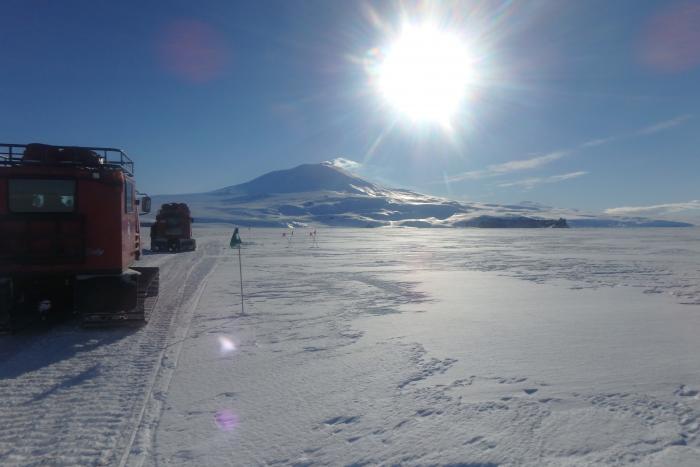 Piston Bullies on our way out past Mt Erebus
Piston Bullies on our way out past Mt Erebus
We had a caravan of three including our team, our divers, and a team collecting sea spiders. I was very happy to see the weather forcasting a warm 12 degree day. The important part...a rare day with very little wind.
I got to ride in the back on the way out. It was a little bumpy at times...reminding me of my own dirt road back home. We had heat and room to stretch out. Not a bad way to spend 2 1/2 hours. It was only 18 miles down the coast, across a winding flag marked path on the frozen sea ice, but our Piston Bully tops is really slow. So, here's a math question...If it took us 2 1/2 hours to go 18 miles...what was our average speed?
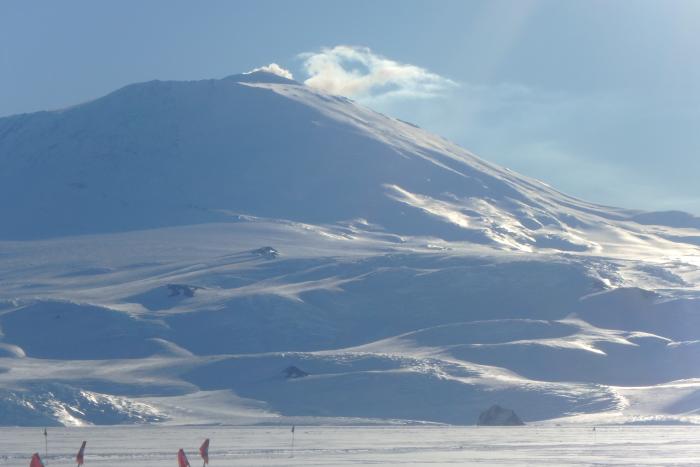 Steam coming off Mt. Erebus
Steam coming off Mt. Erebus
The views on the way out were spectacular. That's a word I've been using a lot lately, but it fits. Mount Erebus was spitting out a gentle puff of steam. It is the worlds's southernmost active volcano. The lava filled crater of Mt Erebus rises from near sea level to over 12000 feet. It's snow covered slopes look so serene and bely the restrained power beneath. I understand that it will occasionally spit out a "bomb" (a piece of lava from the size of a potato to a car sized boulder). It is a strato volcano.
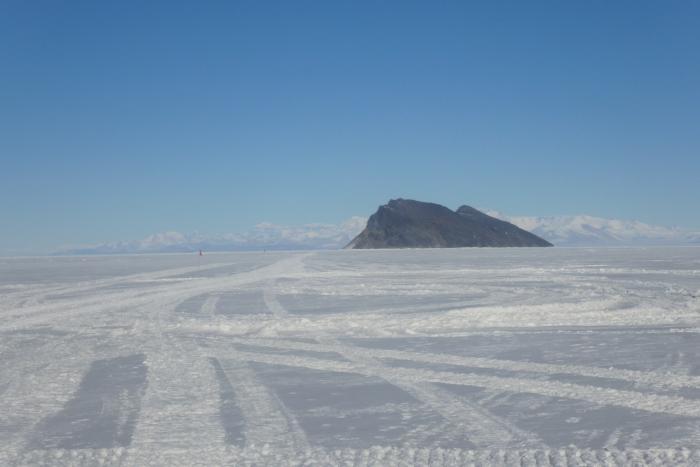 Inaccessable Island
Inaccessable Island
You would think that the ice would be perfectly smooth. Not this year. This year a lot of the sea ice "Wracked" and froze with big chunks of ice sticking up at random angels.
Most of the ice is covered by snow and gives you a feeling like you are actually traveling on land. But, there were areas along our route that were wind-swept and revealed the solid ice sheet. It was a shiny blue color, showing the ocean through the 1.3 meter thickness. It was a little unnerving. But, we drove on.
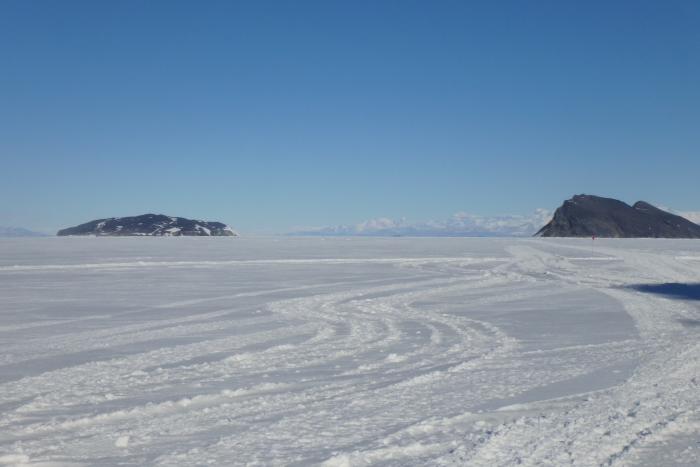 Tent and Inaccessable Island
Tent and Inaccessable Island
As we approached our destination, you could see several islands. They were a dark, stark contrast to the miles upon miles of pure whiteness.
We arrived at Evans point. The ice shelf rose up for hundreds of feet to our right. One the left, the black volcanic rock wall did the same.
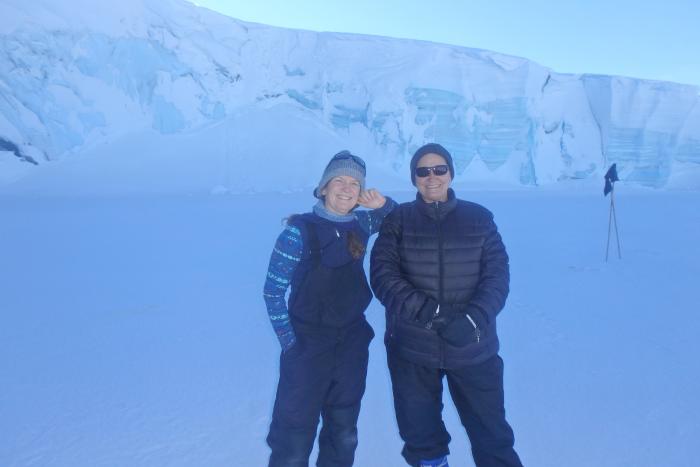 Amy Osborne and Denise Hardoy in front of the Cape Evans Ice Wall
Amy Osborne and Denise Hardoy in front of the Cape Evans Ice Wall
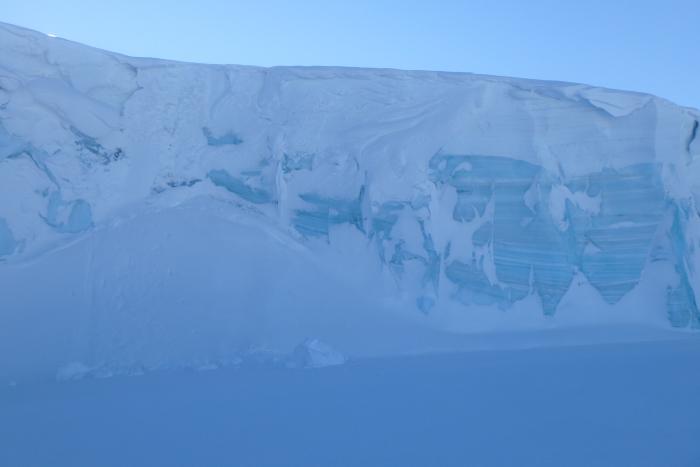 Cape Evans Ice Wall
Cape Evans Ice Wall
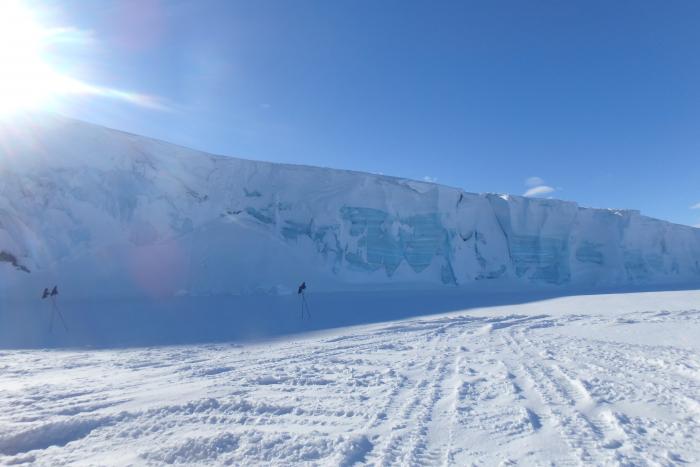 Cape Evans Ice Wall
Cape Evans Ice Wall
The pictures of the wall don't even come close to what it was really like. You could see layers upon layers of compacted glacial ice, topped with a smearing of snow. The layers weren't flat. The alternating color stripes were waved and buckled. I can't imagine the story of their formation that could be read in those layers. This was the leading edge of a glacier that was thousands, or millions, of years old.
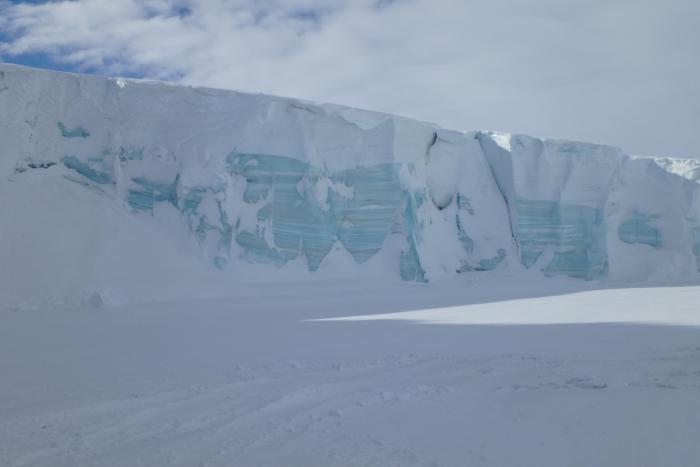 Cape Evans Ice Wall
Cape Evans Ice Wall
The layers formed, melted and reformed through ice ages, and melts, and refreezes. They were there when Robert Scott and his Discovery Expedition first set foot on the Cape in 1901. They saw Shackleton's team struggle through three expeditions across the continent. Now, they watch silently as we attempt to tell their story. Some teams are doing this by drilling ice cores. Our team is looking at the physiology of the fish in these frigid waters. They too have a story to tell. They have been in this stable environment for millions of years. We want to know how they will cope when change arrives.
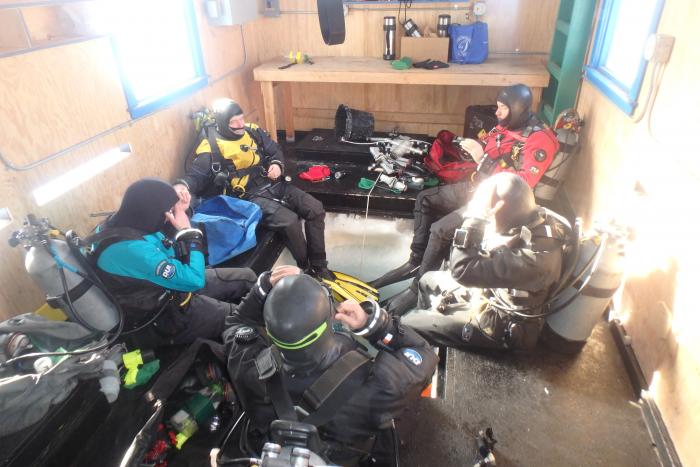 All five divers getting ready to submerge
All five divers getting ready to submerge
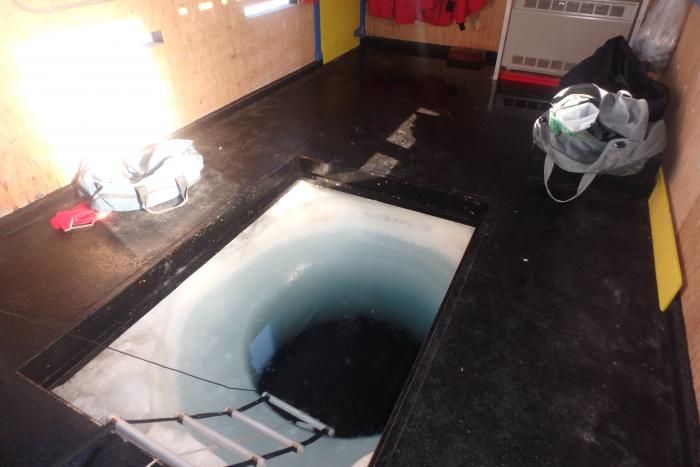 Ice Hole at Evans Point
Ice Hole at Evans Point
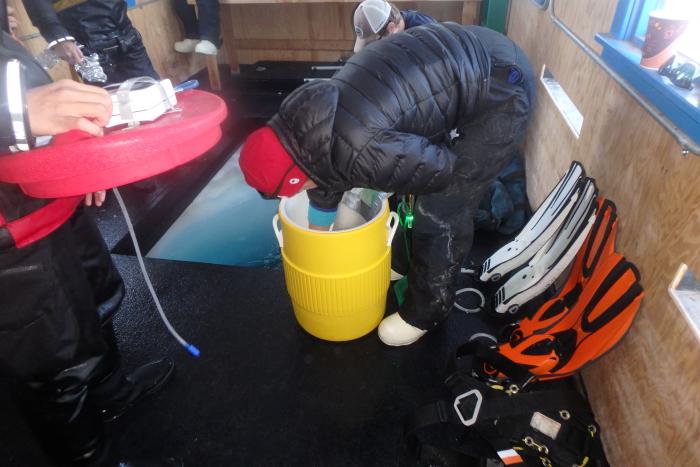 Dr. Anne Todgham checking up on the new catches
Dr. Anne Todgham checking up on the new catches
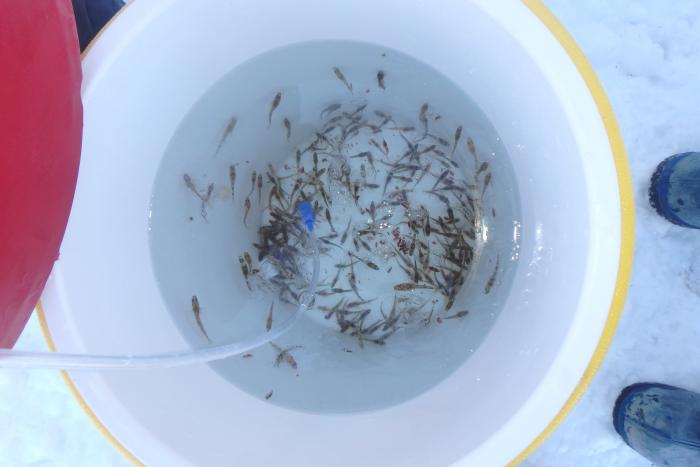 The Day's Catch
The Day's Catch
Today, our divers are catching fish to help answer this question. They spend about 45 minutes to an hour down in the 28 F degree water in order to forward our knowledge about these incredible species. They prepare by donning dry suites over their down body suits(called Weasels!) They have only a tiny battery powered vest to try to hep keep them warm. They they seal the gloves on their suit. The claw shaped gloved are locked in kind of like space suit gloves. Then they cover their heads and seal them at the neck. If any water gets in, they have to immediately get out, or risk freezing. They put on a weight belt to fight buoancy, and strap in their tanks weighing more than fifty pounds.
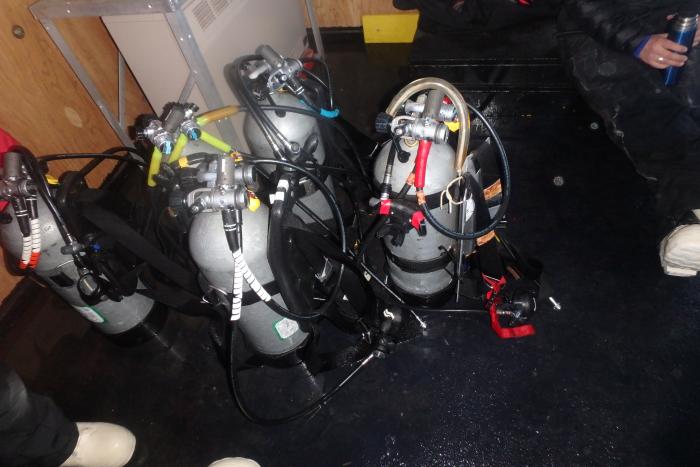 Tanks ready for divers
Tanks ready for divers
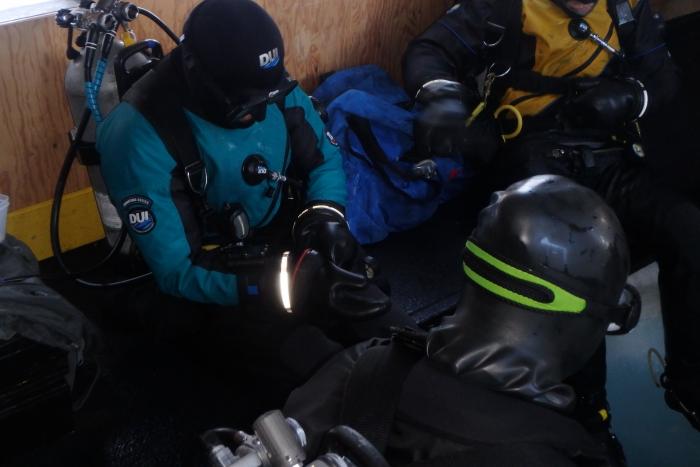 Diver Mandy Frazier seals her gloves
Diver Mandy Frazier seals her gloves
Then they jump into the hole. Under water, the world opens up. They can see for hundreds of yards. They take a lot of safety precautions. They keep an eye on each other, and the hole. As you can imagine, it's really important that they don't get lost under the sheet of ice. They mark our hole with a flashing beacon and stay within sight of it. They are able to dive to 130 feet if needed, but most of our fish hang out in the shallower waters nearer the shore. They like to hide in the jagged platelet ice on the bottom or underside of the ice sheet. Divers use a regular aquarium type fish net to catch them. Then they put them in speciallt created bags to hold until they catch enough and surface.
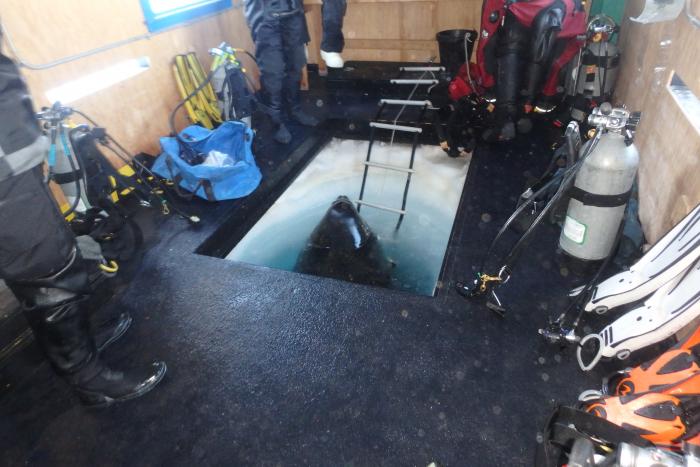 A seal joined our dive team!
A seal joined our dive team!
We had a visitor in our hole while the divers were down. This Weddell seal came up to get a quick breath. The divers give them plenty of distance and will wait to surface until the seal is done using the hole. They even have an emergency tank stashed at 10 meters or so in case they need extra oxygen. Fortunately, Weddell seals are not aggressive towards humans. The divers say they are curious and will just come up to them and stare sometimes. Mostly they just ignore the divers though. They are exceptionally gracefull underwater. They are fast swimmers and have no trouble catching the same fish we are after.
Home
We had such a great day. I can't believe that for now, this is my job.
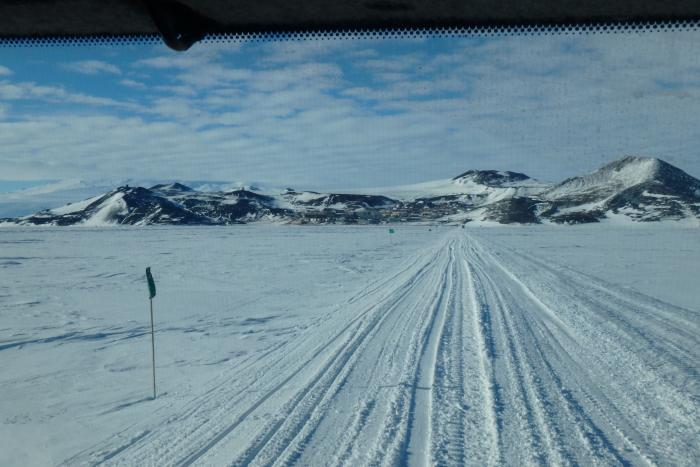 The ice road back to McMurdo from Cape Evans
The ice road back to McMurdo from Cape Evans
Shout Out
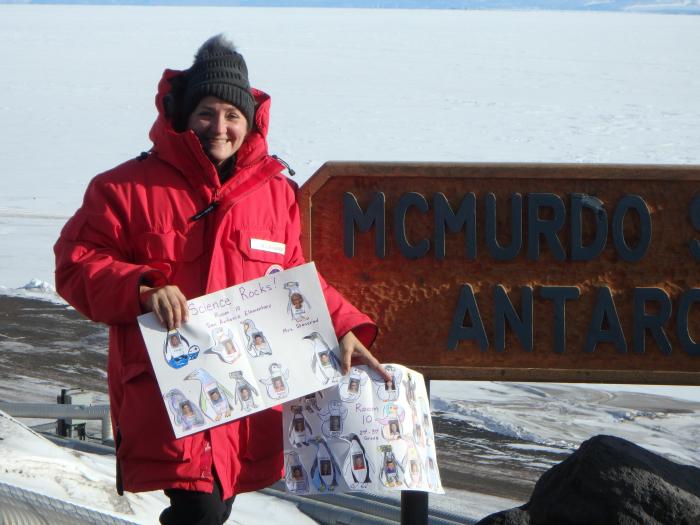 San Antonio Room10 Penguins!!!
San Antonio Room10 Penguins!!!
Hi there San Antonio. A shout out today to Mrs. Stensrud's Room 10 2nd and 3rd graders! Hope you are enjoying my blog. I really appreciate your support. I have'n seen any penguins yet, but lots of seals. I'm still hopeful though!
Monday
Our next dive will be to Cape Evans on Monday again. I really hope our seal comes back to the hole and just maybe...we see a penguin!
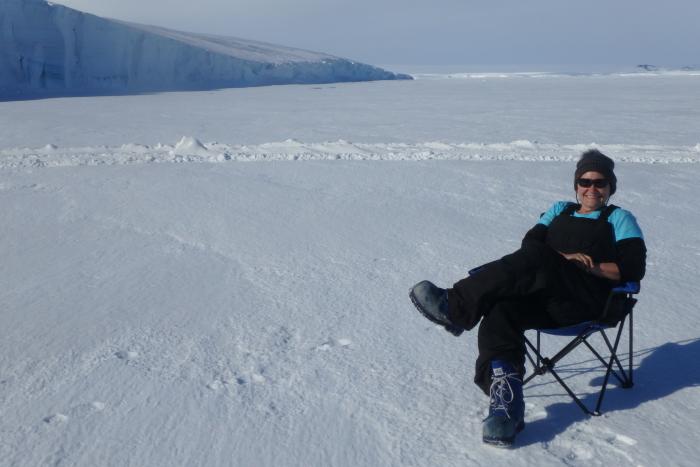 Denise Hardoy soaking up the sunshine at Cape Evans
Denise Hardoy soaking up the sunshine at Cape Evans
Stay Cool,


Comments
Add new comment